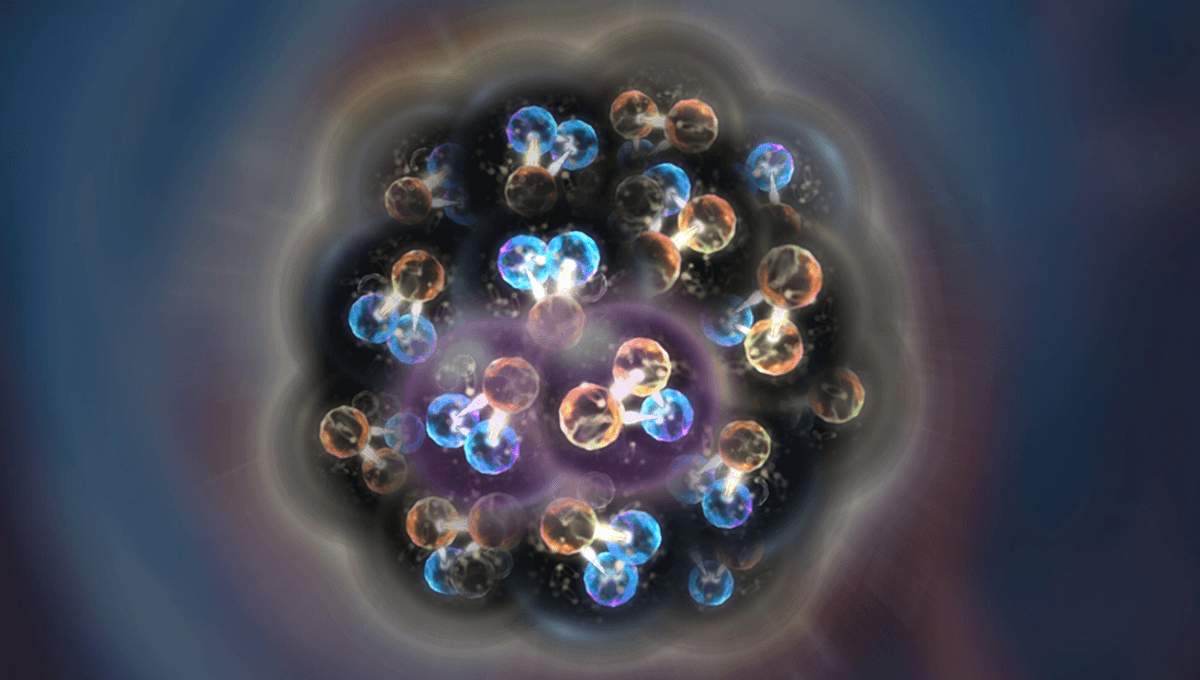
A team of physicists say they have created the first coherent picture of atomic nuclei from their composite particles, quarks and gluons.
The 20th century was a pretty busy hundred years for particle physics. At the beginning of the century, it was believed by physicists that atoms were made up of protons and electrons. This view of the atomic nucleus changed when James Chadwick discovered the existence of the neutron in 1932, for which he won the Nobel Prize three years later.
Not too long afterward, scientists theorized that protons and neutrons contain smaller particles, known as quarks and gluons, which could be “seen” in higher energy experiments. In 1968, experimental evidence for the existence of quarks was found, and evidence for gluons was found 11 years later by colliding electrons and positrons to produce three “jets” of heavier particles, with one being produced by a gluon radiated by a quark-antiquark pair.
Physicists love a particle accelerator, and we have since taken a good look at the six flavors of quarks (up, down, strange, charm, bottom, and top) and the eight different types of gluons.
But there is a bit of a problem, in that the two descriptions of the nucleus of an atom don’t sit too well together. Physicists gain knowledge of atomic nuclei largely by bombarding them with smaller particles, such as electrons. At low energies, the nucleus of an atom appears to behave as if it were made of protons and neutrons, but when the energies are higher, the influence of quarks and gluons becomes “visible” to the experimentalist.
“Until now, there have been two parallel descriptions of atomic nuclei, one based on protons and neutrons which we can see at low energies, and another, for high energies, based on quarks and gluons,” Dr Aleksander Kusina, one of the three theoreticians from the Nuclear Physics of the Polish Academy of Sciences (IFJ PAN) participating in the research said in a statement. “In our work, we have managed to bring these two so far separated worlds together.”
The team looked at data from experiments including those done at the Large Hadron Collider at CERN, described by parton distribution functions (PDFs). In the new analysis, focusing on strongly interacting pairs of nucleons (proton-neutron, proton-proton, and neutron-neutron), the team say they were able to extract information about the structure of the smaller components (quarks and gluons) from parton experiments that were not high enough energy to “view” this substructure.
“In our model, we made improvements to simulate the phenomenon of pairing of certain nucleons. This is because we recognized that this effect could also be relevant at the parton level,” Kusina added. “Interestingly, this allowed for a conceptual simplification of the theoretical description, which should in future enable us to study parton distributions for individual atomic nuclei more precisely.”
The study is published in Physical Review Letters.
Source Link: Physicists Put Together New Picture Of Atomic Nucleus Including Gluons And Quarks